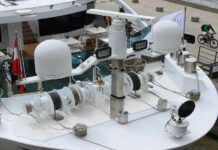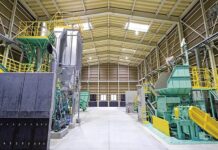Water features have an undeniable power to transform spaces, creating both visual beauty and environmental harmony. As sustainability becomes a priority in modern projects, innovative solutions are merging aesthetics with eco-friendly practices. These features are no longer just about looks; they are actively contributing to healthier ecosystems and smarter energy use. By incorporating renewable energy, water features are evolving into a symbol of progress, reflecting a deeper commitment to environmental stewardship in design and construction.
The Importance of Sustainable Water Features
They don’t just enhance the beauty of a space; they serve important ecological functions that align with modern sustainability goals. By using renewable energy and supporting natural ecosystems, these features offer a range of environmental benefits.
Here are a few reasons why sustainable water features are essential:
- Energy Efficiency: Solar-powered fountains drastically reduce energy consumption by relying on renewable solar energy instead of electricity.
- Environmental Impact: They help maintain healthier ecosystems by promoting water oxygenation and providing habitats for aquatic life.
- Reduction of Carbon Footprint: By using clean energy, they significantly lower the carbon emissions associated with traditional water features.
- Resource Conservation: Sustainable water designs often use water recycling systems, minimizing water waste and supporting responsible resource use.
- Health Benefits: Artificial water features, like ponds and fountains, contribute to reducing stress and enhancing well-being.
Applications in Environmental Projects
Sustainable water features are being widely adopted in various environmental and construction projects, from urban green spaces to large-scale eco-developments. Solar-powered fountains, in particular, have become a popular choice due to their ability to reduce energy consumption while supporting local ecosystems. These fountains are often seen in parks, nature reserves, and residential projects, where they enhance the visual landscape and contribute to environmental well-being.
By utilizing solar energy, these fountains align with certifications such as Leadership in Energy and Environmental Design (LEED) and the Building Research Establishment Environmental Assessment Method (BREEAM). These standards reward energy efficiency and environmental stewardship, making solar-powered water features an ideal fit for projects aiming to achieve both aesthetic and ecological goals.
In larger projects, such as those with extensive water bodies, integrating a solar-powered fountain for 1 acre ponds offers a sustainable solution for maintaining water quality. These fountains support oxygenation, helping to create a healthier aquatic environment while significantly reducing energy consumption. This makes them an ideal addition to projects looking to balance ecological benefits with operational efficiency.
How Solar Pond Fountains Work
Solar pond fountains operate by converting sunlight into electricity using solar panels, which power the pump responsible for circulating water. This process eliminates the need for external electrical sources, making it an eco-friendly alternative. The solar panels absorb sunlight and generate energy that drives the fountain’s system, providing continuous water movement during daylight hours.
Many of these systems also store surplus energy in batteries, allowing the fountain to operate even when sunlight is minimal. This ensures consistent water circulation, promoting a healthier aquatic environment without relying on non-renewable energy sources.
Maintaining Solar Pond Fountains
Proper maintenance of solar pond fountains ensures they operate efficiently and have a long lifespan. While these systems are designed to be low-maintenance, regular care can optimize performance and prevent common issues.
- Panel Cleaning: Ensure the solar panels are free of dirt and debris to maintain maximum energy absorption. Clean the panels regularly with a soft cloth and water.
- Pump Inspection: Check the pump for blockages or buildup of debris. Clear any obstructions to keep the water flowing smoothly.
- Battery Care: If the fountain includes a battery, monitor its health and replace it when needed to ensure continuous operation.
- Winter Preparation: In colder climates, it’s important to store the pump indoors or use a heater to prevent freezing damage.
Challenges and Solutions in Integrating Solar Fountains
While solar pond fountains provide numerous benefits, there can be challenges when integrating them into environmental projects.
One common issue is the dependence on sunlight, which can affect performance in areas with limited sun exposure or during cloudy weather. To mitigate this, many modern solar-powered systems are equipped with battery storage that can retain energy for use during low-light conditions. This ensures continuous operation even when sunlight is insufficient.
Another challenge is the initial installation cost, which can be higher compared to traditional electric-powered fountains. However, these upfront costs are often offset by long-term savings in energy bills and lower maintenance expenses.
Additionally, some projects might face spatial limitations, requiring careful planning to position solar panels in optimal locations to capture sunlight efficiently.
With proper project design and modern technological advancements, these challenges can be effectively addressed, ensuring that solar pond fountains continue to offer a sustainable solution for both small and large environmental projects.
Wrappng Up: Driving Sustainability with Solar Water Features
Solar pond fountains are more than just a trend; they are a key element in advancing sustainable design in environmental and construction projects. By reducing energy consumption, supporting aquatic ecosystems, and aligning with green certifications, they help shape a future where design and nature coexist harmoniously.
As solar technology continues to improve, integrating these features will become even more accessible and beneficial for both large-scale developments and smaller eco-friendly projects. Solar-powered water features are not just a step forward—they are a lasting commitment to sustainability in design.





























